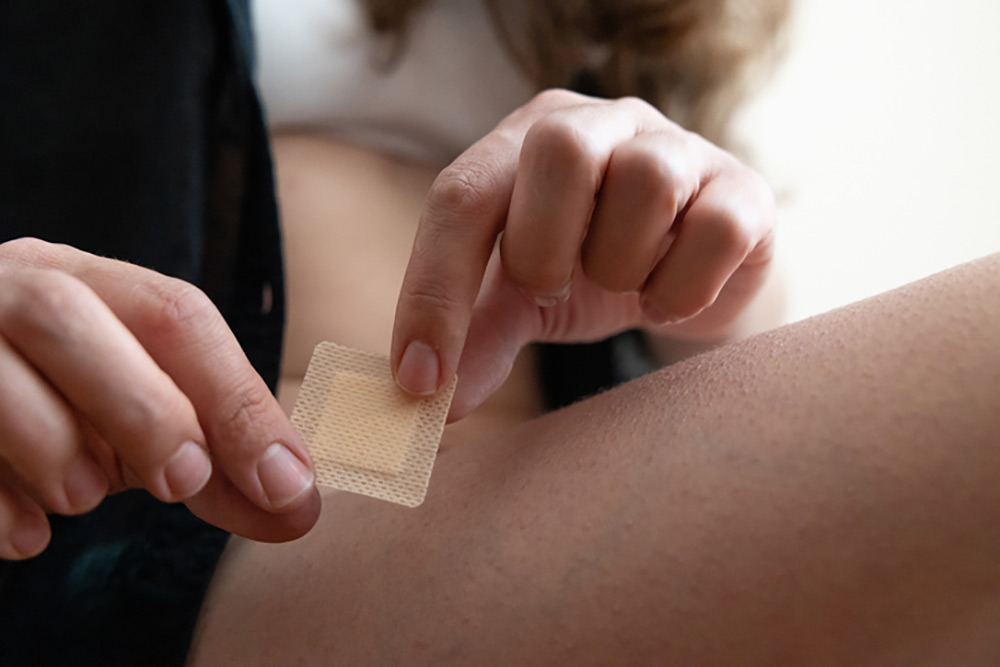
iStock
By Mary Carpenter
THINNING VAGINAL tissues caused by decreased estrogen levels after menopause most often result in vaginal dryness—and torn tissue that creates “occult” hematuria or blood in the urine. Occult refers to microscopic—rather than visible, “gross”—blood in urine that can be asymptomatic as well as invisible to the eye, most often detected by urinalysis at the annual physical exam. Because hematuria can be a sign of cancer in the urinary tract, its discovery often necessitates further testing—most often a CT scan and cystoscopy—often repeated over many years.
“Being middle-aged or older” is one of six risk factors listed for blood in urine—with another being frequent UTIs by WebMD. And while hematuria can cause loss of appetite and swelling, notably around the eyes, even asymptomatic women often seek treatment because of the possibility that hematuria is causing fatigue—and the hope of avoiding more testing in the future.
Microscopic hematuria is a common finding on urinalysis—in one study, occurring in 20% of women tested; and a systemic review found prevalence above 30%, according to the American College of Gynecology (ACOG). ACOG clinical committees have recommend further testing for asymptomatic hematuria in women who have repeated urinalysis that shows elevated numbers of red blood cells, and in those who smoke or once did.
Supplemental estrogen can help with many ills related to low estrogen that can include incontinence; nocturia (nighttime urination), painful sex and brain fog. But for women who are not sexually active, the preferred form of estrogen—pellets injected into the vagina, rather than inconveniently messy vaginal creams—is expensive because of lack of insurance coverage for these diagnoses.
Increasing numbers of post-menopausal women experienced symptoms linked to low estrogen following a flawed 2002 study on Hormone Replacement Therapy (HRT) that led to a dramatic drop in HRT prescriptions—despite its well-established health benefits, such as reduced risk of heart disease and several cancers, including breast and colon; and help with menopause-related issues, especially osteoporosis. While the optimal time for starting HRT is ages 45-55, during menopause, many of the 16,608 women in the 2002 study were in their mid-60s—as well as overweight and already at risk for heart disease.)
“Our generation got screwed,” 60-something DC lawyer B.J. told MyLittleBird, referring to many doctors’ ongoing refusal to prescribe oral HRT for symptoms affected by hormones like estrogen. According to JohnsHopkinsmedicine, “Doctors are increasingly aware of how managing osteoporosis, urinary conditions…and diabetes in female patients may call for different approaches [such as supplemental estrogen] that take into account women’s physiological differences” —though for many women, “increasingly” is not fast enough.
“Vaginal dryness is the most prevalent and bothersome symptom” of GSM (genitourinary syndrome of menopause)—and affects 93% of women, according to a data overview by researchers at the University of Athens, Greece. For sexually active women, “the most predominant complaints…are reduced lubrication and dyspareunia (lasting or recurrent genital pain that occurs before, during, or after sex)”—with a prevalence of 90% and 80% respectively.
While occult hematuria causes no visible changes to the urine, gross hematuria can change its color to pink, red, brownish-red or tea colored. But these colors can also occur with red pigments from food dyes, medications—including antibiotics and painkillers—or eating a lot of beets, according to WebMD. Urine can also be darker as a result of rhabdomyolysis, breakdown of muscle that can occur during intense exercise; or hemolysis, destruction of red blood cells that can be caused by infections, medications and immune system-related conditions.
Urinary tract cancers occur more commonly in smokers—even those who have quit years or even decades before—who are three times more likely to develop bladder cancer than non-smokers. Other risk factors for cancer are exposure to chemicals such as arsenic, and chronic urinary tract inflammation that occurs with UTIs. Like most cancers, these have a much better outcome when caught early—hence the repeat exams.
Meanwhile, the radiation risks of CT scans have decreased dramatically over the years. According to Florida Mayo Clinic radiologist Patricia Mergo, “There’s no reason to forgo a [well-advised] imaging test or X-ray-assisted procedure…especially true for older adults, as potential radiation-caused cancer development may not occur for decades.” But a different risk of scans are incidentalomas, which refers to benign findings that can set off a cascade of further tests—usually involving repeat scans.
“Once a smoker” is a common refrain among women whose history has led to years of repeat testing. For me, filling in the questionnaire blank that, yes, I smoked for three years during college—fifty years ago—leads to follow-up testing for hematuria. After the first CT scan showed a so-called incidentaloma—a small nodule on my lung, probably the result of pneumonia—my doctor prescribed follow-up scans every year until, after five, I switched doctors. My current internist of more than 15 years now knows my history well enough that, following a clear CT scan and cystoscopy, she has agreed to no more testing—and prescribed the good injectable estrogen in pellet form, covered by insurance, with a diagnosis of hematuria.
—Mary Carpenter regularly reports on topical subjects in health and medicine.
